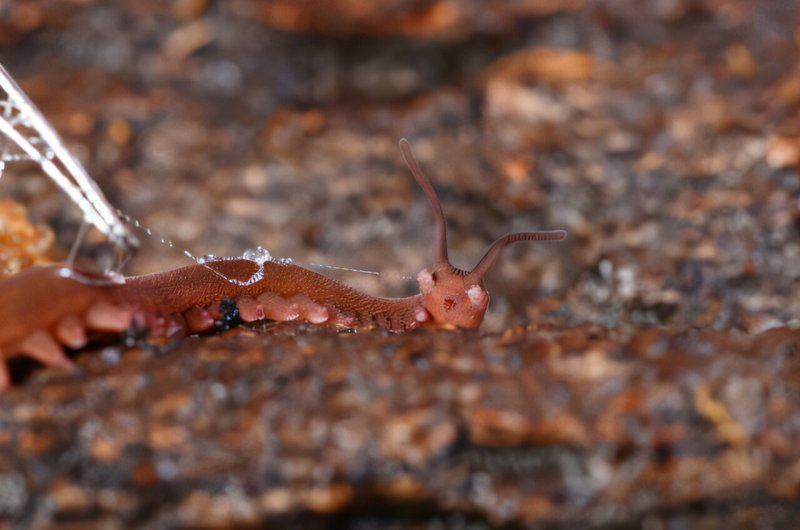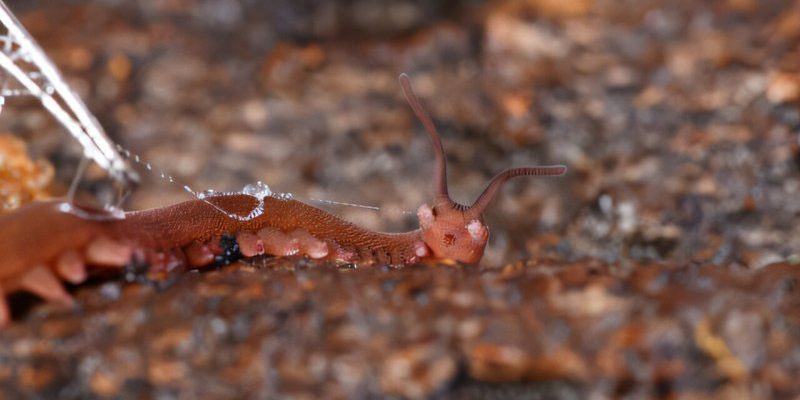
Imagine walking through a lush forest, where every leaf and droplet of water teems with life. You might just overlook a velvet worm, but its slime is crucial to that intricate web of life. It acts as a weapon for hunting, a defense mechanism, and even a tool for reproduction. Thinking about how these tiny creatures impact their surroundings can give you a fresh perspective on the interconnectedness of all living things.
Let’s dive deeper into the ecological significance of velvet worm slime and explore how it contributes to our understanding of nature.
What Are Velvet Worms?
Velvet worms, or Onychophorans, might look like something out of a sci-fi movie. With their soft bodies, multiple legs, and a velvety texture, they’re truly unique. These creatures are often found in humid, tropical areas, hiding under leaf litter or in the bark of trees. Their diet mainly consists of insects and other small invertebrates, which they catch using their remarkable slime.
These fascinating critters belong to a group that’s more closely related to arthropods than to worms, which might surprise you. They have a lengthy evolutionary history, dating back hundreds of millions of years. Velvet worms are often called “living fossils” because they’ve changed little over time, adapting perfectly to their environments.
You might be wondering how they catch their prey. Well, this is where the slime comes into play. By using a specialized slime gland, velvet worms can shoot out sticky strands of this gooey substance to immobilize their victims. It’s like having a built-in web-slinger!
The Role of Slime in Hunting
When it comes to **hunting**, velvet worm slime is nothing short of incredible. The slime has a unique composition that allows it to stick to any surface, including the hard exoskeletons of insects. When a velvet worm senses potential prey, it can propel a jet of slime that ensnares its target.
The slime’s stickiness not only traps the insect but also contains enzymes that start breaking down the prey’s body. This gives the velvet worm a head start on digestion, making it easier to consume their catch. Picture it like having a personalized meal-prepping system right at their disposal!
Here’s the thing: this hunting technique showcases not only the **efficiency** of velvet worms but also their role in controlling insect populations. By preying on various insects, they help maintain a balanced ecosystem. Without them, certain insects could become overpopulated, possibly harming plant life in their environment.
Defense Mechanism
Velvet worms don’t just use their slime for capturing prey; it also serves as an effective **defense mechanism**. When threatened, these creatures can release their slime as a way to escape predators. The sticky filaments can ensnare and confuse attackers, giving the worm a chance to flee.
Think about it: if you’re backed into a corner, what better way to get away than to create a distraction? The slime can even inhibit the movement of larger predators temporarily—like a tiny ninja escaping from a giant!
Additionally, velvet worm slime has been shown to have antimicrobial properties. This means it can help prevent infections from injuries or encounters with other creatures. By protecting themselves with their slime, these worms enhance their chances of survival, which is crucial in the wild.
Reproductive Significance of Slime
Now, let’s talk **reproduction**. It might surprise you, but velvet worm slime plays a role in their mating process too. During courtship, some species produce slime to attract mates. The male might present the female with a ball of this gooey substance, which she can inspect. If she’s impressed, this might seal the deal and lead to mating.
In some cases, the slime can even provide a physical connection between the two during the mating process, ensuring that the male can effectively transfer sperm. So, while it seems like a simple act, it has significant implications for the continuation of their species.
This reproductive use of slime adds another layer to its ecological significance. It helps maintain genetic diversity within velvet worm populations, which is essential for their adaptability to changing environments.
Slime and Ecosystem Health
The impact of velvet worm slime goes beyond the worms themselves. Their presence in an ecosystem is a good indicator of environmental health. Since they thrive in moist, undisturbed habitats, finding a healthy population of velvet worms usually means the ecosystem is in good shape.
This can also serve as a crucial alert system for scientists studying **biodiversity** and conservation. If a velvet worm population declines, it might signal underlying environmental issues, like habitat destruction or climate change.
Furthermore, the slime can benefit other organisms as well. For instance, the nutrients in the slime can enrich the soil when it breaks down, supporting plant life that many other creatures depend on. In a way, velvet worm slime can be seen as a small but vital piece of a much larger puzzle.
Potential Applications of Velvet Worm Slime
You might be surprised to learn that the unique properties of velvet worm slime are catching the attention of researchers and scientists. Its incredible stickiness and antimicrobial properties make it a candidate for various **biomedical applications**.
For instance, the slime’s composition could inspire new kinds of adhesives or wound dressings. Just think of the possibilities: a bio-friendly adhesive that works on a variety of surfaces or a dressing that reduces infection risk while promoting healing.
Research is still in its early stages, but the potential applications are promising. Scientists are exploring how this natural substance can contribute to sustainable solutions in medicine and materials science. It’s fascinating to consider how something as simple as slug slime could have significant impacts on our health and technology.
Conservation Implications
With all this ecological significance, it’s crucial to consider the conservation of velvet worms and their habitats. Many species of velvet worms are threatened due to habitat loss and climate change. Protecting these creatures and their environments isn’t just about saving them; it’s about preserving the complexity of the ecosystems they inhabit.
Local conservation efforts can play an essential role in maintaining the delicate balance of these ecosystems. Promoting awareness of velvet worms can inspire communities to take action to protect their habitats. After all, if we want to enjoy the richness of our natural world, we need to safeguard every tiny player, even those that might seem insignificant.
So next time you hear about **velvet worms** and their slime, remember that these little creatures are more than just oddities. They are vital components of our ecosystems, contributing to biodiversity, health, and even the advancement of science.
In conclusion, the ecological significance of velvet worm slime is a perfect example of how interconnected life can be. From hunting to defense mechanisms, reproduction, and ecosystem health, these tiny creatures play a big role in nature. By appreciating and protecting them, we help secure a vibrant future for our planet’s ecosystems.

